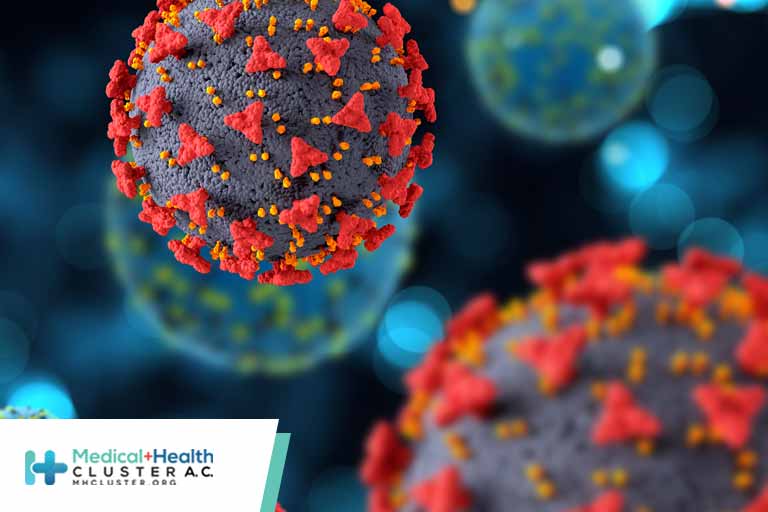7 días en 7 noticias, 1 cifra y 1 frase:...
Leer más
COVID-19 Treatments: What’s In, What’s Out

A look at which treatments are effective — and which aren’t
Countless therapies have been tried for COVID-19. Not all have failed as spectacularly as hydroxychloroquine, so it can be difficult to keep track of what’s been proven to work, and what has not.
Below is a live list of currently authorized and/or validated therapies — noting the stage of disease for which they work best — as well as some others that didn’t pan out or are still under evaluation.
MedPage Today will continue to update this list as new information becomes available.
Treatments in Use
Remdesivir
Remdesivir, an antiviral, is currently the only FDA-approved therapy for COVID-19. It prevents SARS-CoV-2 from replicating by binding to RNA-dependent RNA polymerase, a key enzyme the virus needs to propagate.
It was approved in October for hospitalized COVID-19 patients ages 12 and up who weigh at least 88 lbs. Its original Emergency Use Authorization (EUA) has been revised to also allow for treatment of hospitalized pediatric patients under 12 who weigh at least 7.7 lbs.
FDA also issued an EUA for the combination of remdesivir plus the oral JAK inhibitor barcitinib (Olumiant) in hospitalized patients with severe COVID-19, which is supported by the NIH guidelines.
NIH guidelines recommend the use of remdesivir in hospitalized patients who require supplemental oxygen, either on its own, or in combination with dexamethasone. For those requiring high-flow or noninvasive ventilation, NIH recommends remdesivir only in combination with dexamethasone.
The NIH originally recommended remdesivir for use in mechanically ventilated patients, but limited its scope of use in December, due to a “lack of data showing benefit at this advanced stage of the disease.”
Dexamethasone
Dexamethasone, a corticosteroid with potent anti-inflammatory effects, is recommended for use in many categories of patients hospitalized with COVID-19, but not for those with mild-to-moderate disease who aren’t in the hospital.
While it recommends against dexamethasone for those hospitalized but not on supplemental oxygen, NIH recommends it for those who need supplemental oxygen, high-flow or noninvasive ventilation, and mechanical ventilation or ECMO.
According to findings from the RECOVERY trial, dexamethasone use in those who required mechanical ventilation cut the risk of death by about 35% compared with usual care. Overall mortality also was lower in all hospitalized patients who received the drug.
Tocilizumab
On March 5, the NIH updated its guidance regarding the anti-interleukin-6 (IL-6) monoclonal antibody tocilizumab for COVID-19, as new data from RECOVERY and another large trial became available.
It now recommends using tocilizumab in combination with dexamethasone in certain hospitalized COVID patients exhibiting rapid respiratory decompensation. That includes those who have been admitted to the ICU within the previous 24 hours who require invasive mechanical ventilation, noninvasive mechanical ventilation or high-flow nasal cannula oxygen, or — outside the ICU — patients with rapidly increasing oxygen needs who require noninvasive ventilation or high-flow oxygen and have significantly increased markers of inflammation.
The agency says tocilizumab should be avoided for “significantly” immunocompromised patients.
There’s no evidence for using other IL-6 inhibitors in COVID-19, but many remain under study.
Anticoagulation
NIH recommends that all adults hospitalized for COVID-19 who aren’t pregnant should receive prophylactic anticoagulation to prevent venous thromboembolism (VTE). (Pregnant patients hospitalized for severe COVID-19 should also get prophylactic anticoagulation unless it’s contraindicated.)
The agency notes that there are currently insufficient data to recommend either for or against the use of thrombolytics or higher-than-prophylactic-doses of anticoagulation in hospitalized patients outside of a clinical trial.
Convalescent Plasma
Convalescent plasma has an FDA emergency use authorization to treat hospitalized COVID-19 patients. Only high-titer plasma is now authorized, however, and with restriction to hospitalized patients who are early in their disease course or those who have impaired humoral immunity. The scope of authorization was narrowed in February, to specify the use of only high-titer plasma.
However, NIH guidelines state there are insufficient data to recommend for or against the use of convalescent plasma in the treatment of COVID-19. Clinical studies have showed mixed results, and an NIH-sponsored study of the agent was recently halted for futility.
Monoclonal Antibodies: Eli Lilly’s bamlanivimab/etesevimab combo and Regeneron’s casirivimab/imdevimab
On April 16, the FDA rescinded the EUA for bamlanivimab monotherapy due to its lack of efficacy against SARS-CoV-2 variants. NIH now recommends using either monoclonal antibody combination therapy in outpatients with mild-to-moderate COVID-19 who are at high risk for clinical progression.
The FDA issued the EUA for casirivimab/imdevimab in November, and the EUA for bamlanivimab/etesevimab in February.
One barrier to practical application is that they require intravenous infusion — most easily delivered in hospitals yet hospitalized patients aren’t eligible for them.
Budesonide
In a pragmatic British trial, the inhaled corticosteroid budesonide (Pulmicort) shortened the duration of illness for outpatients at risk for severe disease, and diminished rates of hospitalization or death. The NIH, however, has yet to weigh in on the therapy.
Failed or Debated Therapies
Hydroxychloroquine
Both the WHO and the NIH recommend against the use of hydroxychloroquine — with or without azithromycin — for the treatment of COVID-19 in both hospitalized and nonhospitalized patients.
Findings from the RECOVERY trial showed that use of hydroxychloroquine did not reduce mortality among COVID-19 patients after 28 days, and in fact trended towards risk of death. Additionally, patients who received the antimalarial drug had a longer median hospital stay than those who received standard of care.
The FDA granted hydroxychloroquine emergency use authorization in March 2020, but rescinded it in June following the publication of these findings.
Another clinical trial based in Brazil and published in the New England Journal of Medicine found that hydroxychloroquine with or without azithromycin did not improve outcomes for hospitalized patients with mild-to-moderate COVID-19 after 15 days.
Several clinical trials and observational studies have found no benefit of using hydroxychloroquine to treat COVID-19. One retrospective cohort study based in Michigan, however, did show improved survival rates among patients that used the drug — but the study did not account for confounders including ICU admission differences and dexamethasone use.
Ivermectin
In January, the NIH changed its recommendation from “against” use of ivermectin in COVID-19 to noting that there are “insufficient data” to recommend for or against the therapy.
The antiparasitic drug has shown some potential to inhibit SARS-CoV-2 replication in cell cultures. However, according to the NIH, achieving the plasma concentrations necessary to achieve the antiviral efficacy detected in vitro would require doses up to 100-fold higher than those approved for use in humans.
NIH also notes several limitations of available randomized trials and retrospective cohort studies, including small sample size, various doses and schedules, open-label design, concomitant medications like hydroxychloroquine and azithromycin, and ill-defined study outcomes.
Vitamin C
NIH states that there are insufficient data to recommend for or against the use of vitamin C (ascorbic acid) in COVID-19.
There are several ongoing clinical trials evaluating the efficacy of vitamin C for treating COVID-19, but few have been completed. A study of 56 hospitalized patients in China found that high-dose intravenous vitamin C was not effective at preventing mechanical ventilation over a 28-day period. Additionally, a randomized controlled trial of vitamin C and zinc showed no impact of either supplement on the course of symptoms in patients with mild illness.
Vitamin D
NIH states that there are insufficient data to recommend for or against the use of vitamin D in COVID-19.
While vitamin D deficiency has been associated with an increased risk of community-acquired pneumonia in older adults and children, no conclusive evidence shows it could be used to fight COVID-19.
In February, a large randomized Brazilian trial published in JAMA found no difference in length of hospital stay for those with moderate to severe COVID-19 given high-dose vitamin D or placebo.
Zinc
NIH states there are insufficient data to recommend for or against the use of zinc in COVID-19. It also recommends against zinc supplementation above the recommended dietary allowance for the prevention of COVID-19, except in a clinical trial.
Protease Inhibitors
The NIH recommends against using lopinavir/ritonavir and other HIV protease inhibitors to treat COVID-19 in hospitalized and nonhospitalized patients because clinical trials have not shown clinical benefit in COVID patients.
The drugs did not demonstrate efficacy in two large randomized controlled trials of hospitalized patients — including the RECOVERY trial and the WHO Solidarity Trial.
Colchicine
Neither the NIH nor WHO have any guidelines concerning this oral anti-inflammatory drug often used to treat gout, although it is still being investigated as a potential COVID treatment.
The colchicine arm of the RECOVERY trial was recently halted because an independent data monitoring committee found the drug wasn’t helping hospitalized patients with COVID.
However, top-line results from the COLCORONA trial, which were announced in January via a press release, showed improved outcomes for patients with mild illness from COVID-19.
Créditos: Comité científico Covid




